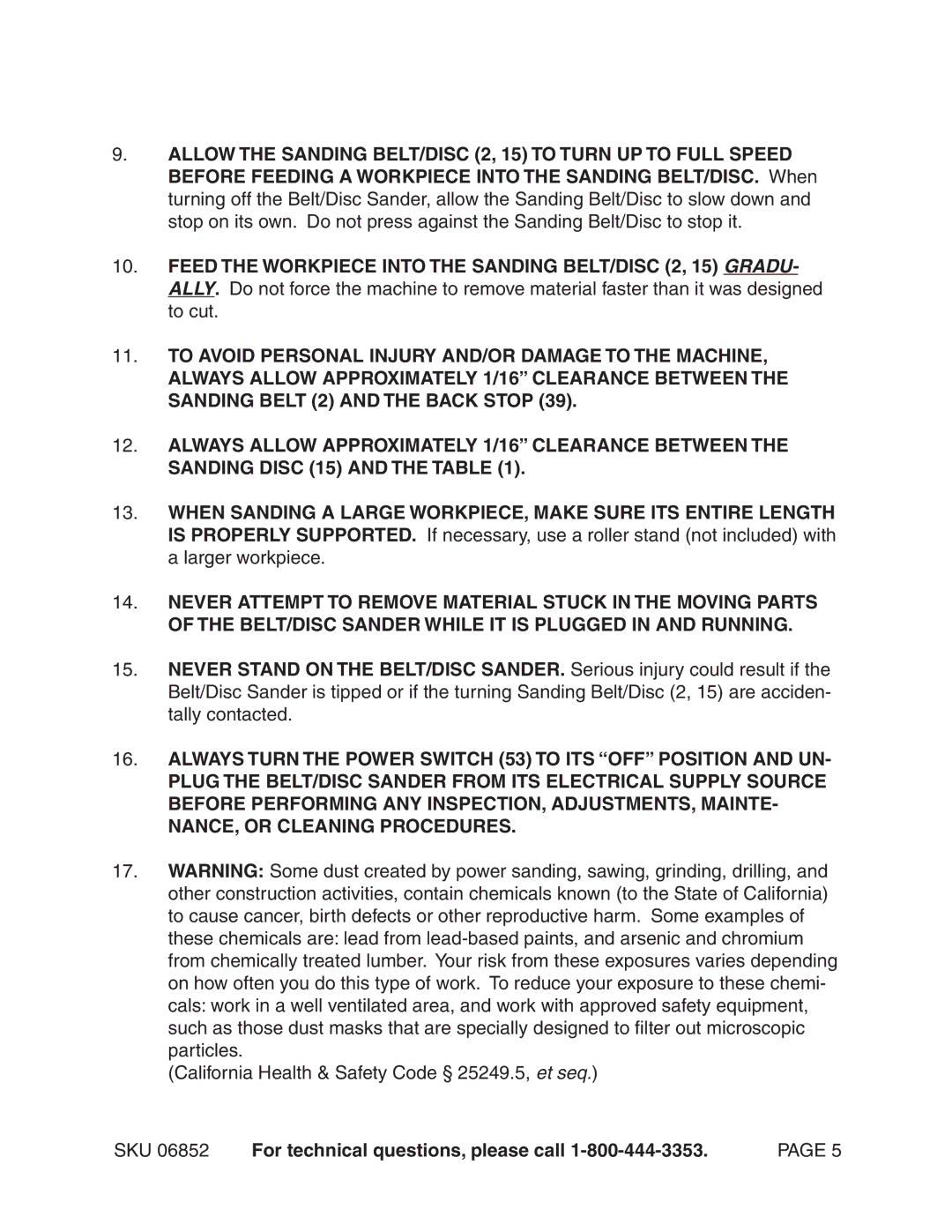9.ALLOW THE SANDING BELT/DISC (2, 15) TO TURN UP TO FULL SPEED BEFORE FEEDING A WORKPIECE INTO THE SANDING BELT/DISC. When turning off the Belt/Disc Sander, allow the Sanding Belt/Disc to slow down and stop on its own. Do not press against the Sanding Belt/Disc to stop it.
10.FEED THE WORKPIECE INTO THE SANDING BELT/DISC (2, 15) GRADU- ALLY. Do not force the machine to remove material faster than it was designed to cut.
11.TO AVOID PERSONAL INJURY AND/OR DAMAGE TO THE MACHINE, ALWAYS ALLOW APPROXIMATELY 1/16” CLEARANCE BETWEEN THE SANDING BELT (2) AND THE BACK STOP (39).
12.ALWAYS ALLOW APPROXIMATELY 1/16” CLEARANCE BETWEEN THE SANDING DISC (15) AND THE TABLE (1).
13.WHEN SANDING A LARGE WORKPIECE, MAKE SURE ITS ENTIRE LENGTH IS PROPERLY SUPPORTED. If necessary, use a roller stand (not included) with a larger workpiece.
14.NEVER ATTEMPT TO REMOVE MATERIAL STUCK IN THE MOVING PARTS OF THE BELT/DISC SANDER WHILE IT IS PLUGGED IN AND RUNNING.
15.NEVER STAND ON THE BELT/DISC SANDER. Serious injury could result if the Belt/Disc Sander is tipped or if the turning Sanding Belt/Disc (2, 15) are acciden- tally contacted.
16.ALWAYS TURN THE POWER SWITCH (53) TO ITS “OFF” POSITION AND UN- PLUG THE BELT/DISC SANDER FROM ITS ELECTRICAL SUPPLY SOURCE BEFORE PERFORMING ANY INSPECTION, ADJUSTMENTS, MAINTE- NANCE, OR CLEANING PROCEDURES.
17.WARNING: Some dust created by power sanding, sawing, grinding, drilling, and other construction activities, contain chemicals known (to the State of California) to cause cancer, birth defects or other reproductive harm. Some examples of these chemicals are: lead from
(California Health & Safety Code § 25249.5, et seq.)
SKU 06852 | For technical questions, please call | PAGE 5 |
